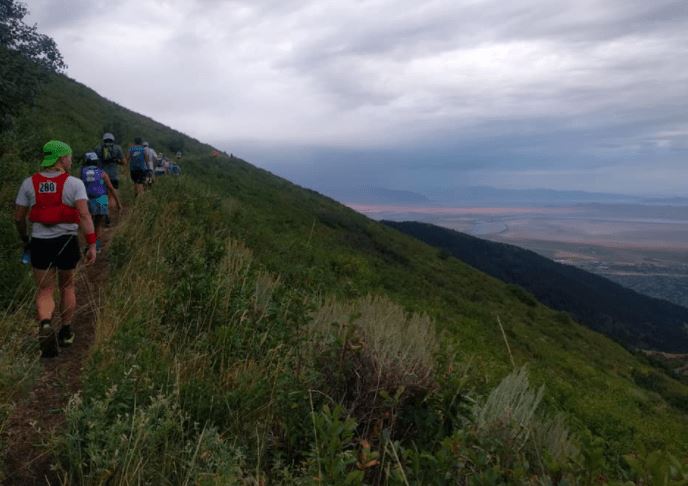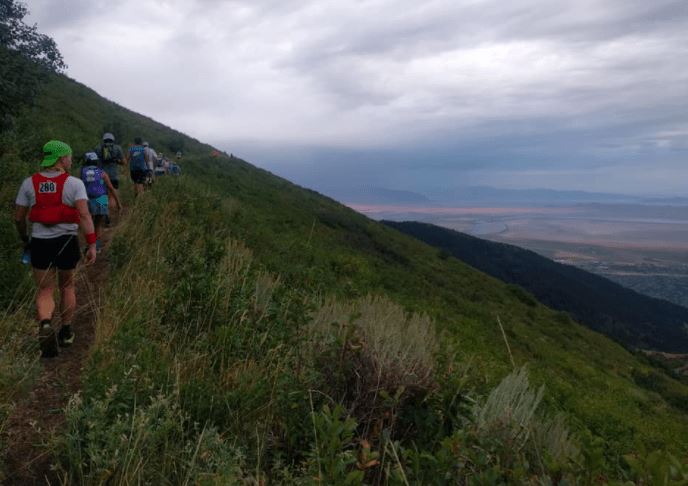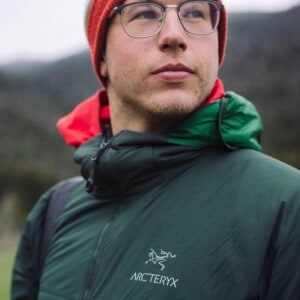“I run 100-mile races because there are no grizzly bears left to kill”
When a TV reporter put a mic in the face of a Wasatch 100 ultra-runner in the mid-80s, that was his response, according to John Grobben, race director of the renowned ultra-trail race.
“Ultrarunners look for significant challenges in their life, which is why they choose to run 100-mile races,” said Grobben. “They look for mental and physical challenges, and ultra races provide those.”
The elite of the elite have been seeking these challenges in The Wasatch 100 (WF100) since 1980, when the endurance event first started in Utah’s Wasatch Mountains. With a total elevation gain of 24,000 feet, WF100 stretches from just outside of Farmington, on the western side of the mountains, and snakes its way all the way down to the eastern side of the range, ending in Soldier Hollow on the banks of Deer Creek Reservoir.

WF100 is unique in that it does not accept financial support from its brand partnerships and sponsors. “We look for companies that we consider are a good product, share our values, and are interested in working with us,” Grobben said. “Gnarly has been volunteering at an aid station for a few years now, and the brand has a really great product. I’m really excited to start working with Gnarly as the official hydration sponsor.”
Gnarly Nutrition will be supporting WF100 by providing Gnarly Fuel2O and Gnarly Hydrate at aid stations throughout the course. Gnarly Fuel2O is the all-in-one, vegan friendly solution for long days on the trails. The product is packed with electrolytes and calories to replace what is lost during an effort, and it also contains HMB, which is a metabolite geared toward recovery. Gnarly Hydrate is loaded with electrolytes and B vitamins to replenish what is lost through sweating. Both Fuel2O and Hydrate are ideal for trail runs, especially for big pushes like the WS100.
“The Wasatch 100 is iconic and a very well respected ultra with a long standing history,” said Gnarly Nutrition CEO Eli Kerr. “Its reputation as a difficult course, and as a community that cares deeply about its participants and partners, are aspects that we really like about the race. Plus, it’s always great to support an event that takes place in our own backyard.”
We caught up with John Grobben to chat more about the race’s history, how trail and ultra-running has evolved since 1980, and more. Check out the full interview below.
How would you describe WF100’s influence on the trail running world?
We’re the second oldest 100-miler in the world! (founded in 1980). On top of that, I think one of the things that we’re most pleased about is that we were the first race that required trail work as part of the entry fee. Within a year, we did it, then the next year, 50% of the ultras were doing it. Now, just about every race requires trail work.
We like to maintain a good relationship with the Forest Service, as well as the cities and counties we interact with. We think it’s important to give back to these communities and trails that we interact with.
One time we were going out on a trail job, and the Forest Service worker we were with at the time said, “We love you ultra runners. You show up, you run to the work site five or more miles, carry your own tools, work eight hours, and then thank us for the privilege.”
In your eyes, how has trail running changed since 1980?
The trail runners of yesterday ran in Converse All-stars and cut-off shorts. They didn’t have fancy shoes, gear or food. They’d come into the checkpoint and eat yogurt and oatmeal and pizza.
But I think the runners of today are significantly faster, more well trained, and especially know what they need to eat and drink – that stuff has all been refined. But those old guys … racing was a different beast back in those days.
Though, the WF100 has a reputation of being a difficult race, So, when a runner might try another race on a whim, most people in the ultra community know that if you’re coming to WF100, you gotta be ready. It’s not a weenie roast.
How has ultra running remained the same since 1980?
It’s still 100 miles. You still gotta do it alone. The mountains are just as steep and the rocks are just as sharp. The nights are just as cold and the days are just as hot. From that aspect, running 100 miles is still difficult. There is no doubt about that.
Even though we now have companies like Gnarly making electrolyte drinks, which we didn’t used to have, you still have to do the training. People can have the best high-tech gear and the best nutrition, but if they don’t put in the miles then they won’t finish the race.
What’s your favorite part about being race director for the Wasatch 100?
There are hundreds of people that I am friends with, but that I only get to talk to two days a year. The rest of the time I don’t see them or they don’t live around here. When I see someone at WF100 and don’t see them ‘til the next one, we always just pick up where we left off. That’s the coolest part of being associated with the race: Those friendships and relationships that I get a chance to establish and grow. I have a lot of really great friends.
Why did you decide to have Gnarly as the official hydration sponsor?
Gnarly has a great product, and is in a stage of aggressive growth. The decision just made sense. I really hope Gnarly sets the standard for the race.




